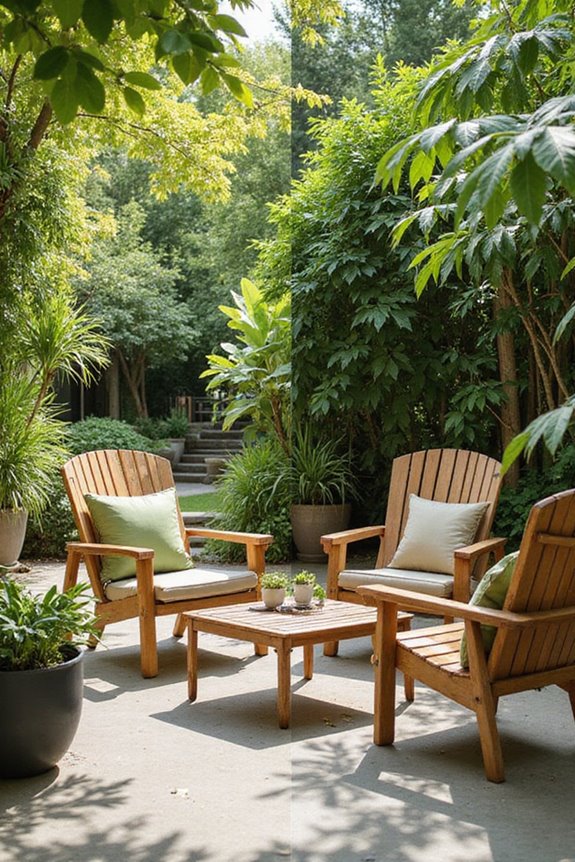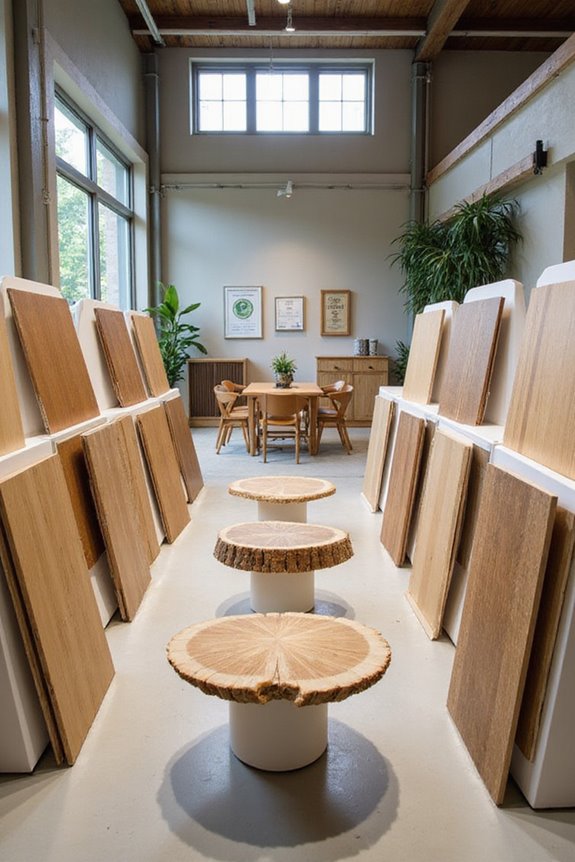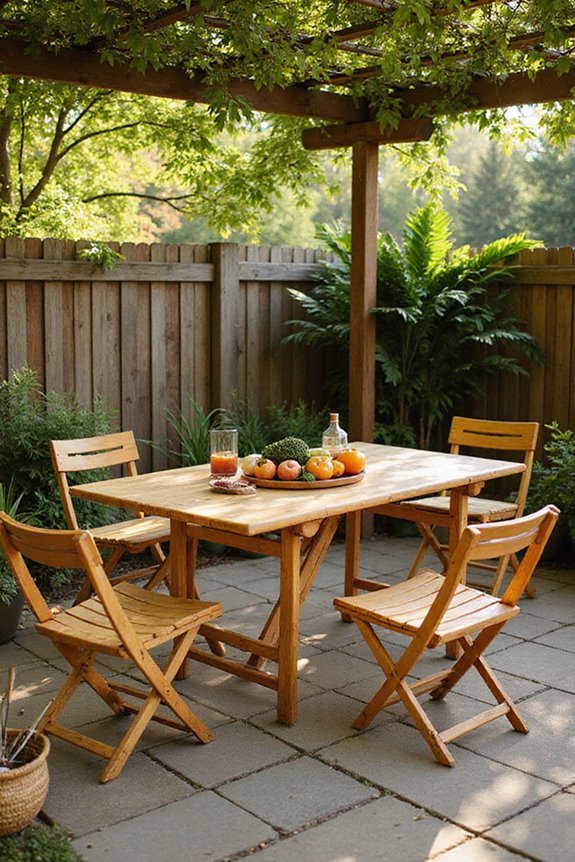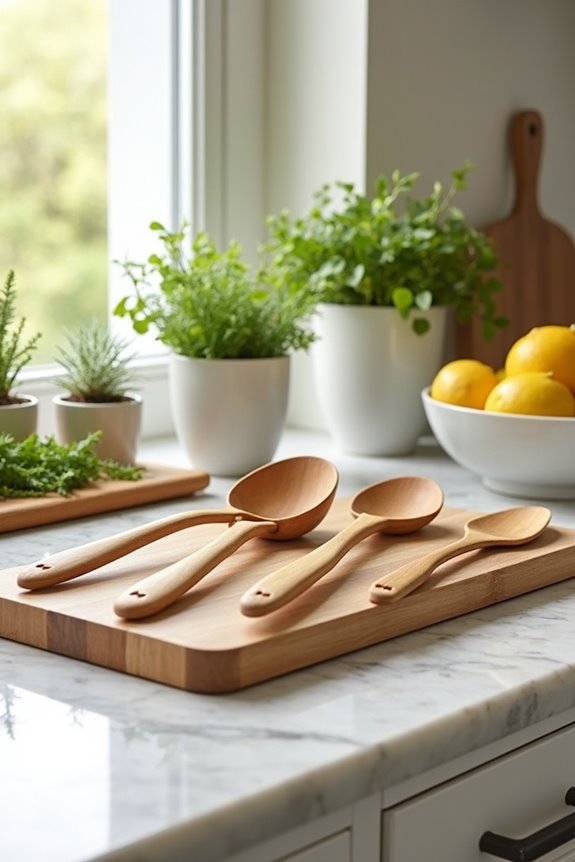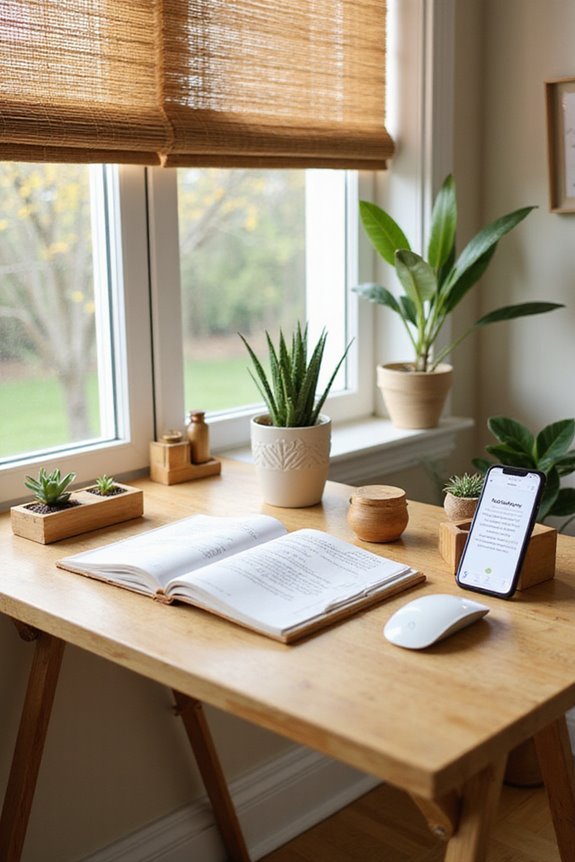When choosing between bamboo and teak outdoor furniture, we should consider a few key factors. Teak is highly durable and can last over 75 years with minimal maintenance, while bamboo needs more frequent care and can be brittle. Additionally, teak has beautiful, rich tones that deepen over time, whereas bamboo offers a lighter, modern look. Finally, bamboo’s rapid growth makes it more sustainable, but teak’s longevity might justify its longer cultivation period. Let’s explore these materials further.
Key Takeaways
- Teak furniture offers exceptional durability and weather resistance, lasting over 75 years with minimal maintenance compared to bamboo’s shorter lifespan.
- Bamboo grows quickly and supports biodiversity, but requires regular sealing and maintenance to prevent moisture damage.
- Teak features a warm golden-brown color that deepens over time, while bamboo offers a light, modern aesthetic with unique grain patterns.
- Teak’s natural oils provide protection from pests and moisture, whereas bamboo often needs frequent upkeep to maintain its structural integrity.
- Teak’s dense grain enhances its load capacity and stability, while bamboo may require lamination for greater strength under heavy loads.
Durability and Weather Resistance
When comparing the durability and weather resistance of bamboo and teak outdoor furniture, we find some key differences worth noting. Teak stands out with its exceptional strength and natural oils, making it highly resistant to rot, pests, and various weather conditions. It can last over 75 years with minimal care. In contrast, bamboo has a high hardness rating but can be more brittle under heavy loads. Its weather resistance isn’t as robust, requiring regular sealing to prevent moisture damage.
Here’s a quick durability comparison:
- Teak: Lasts decades, low maintenance, and excellent weather resistance.
- Bamboo: Good longevity but needs frequent sealing and is more susceptible to damage.
Ultimately, teak’s endurance makes it a long-term investment for outdoor spaces.
Environmental Impact and Sustainability
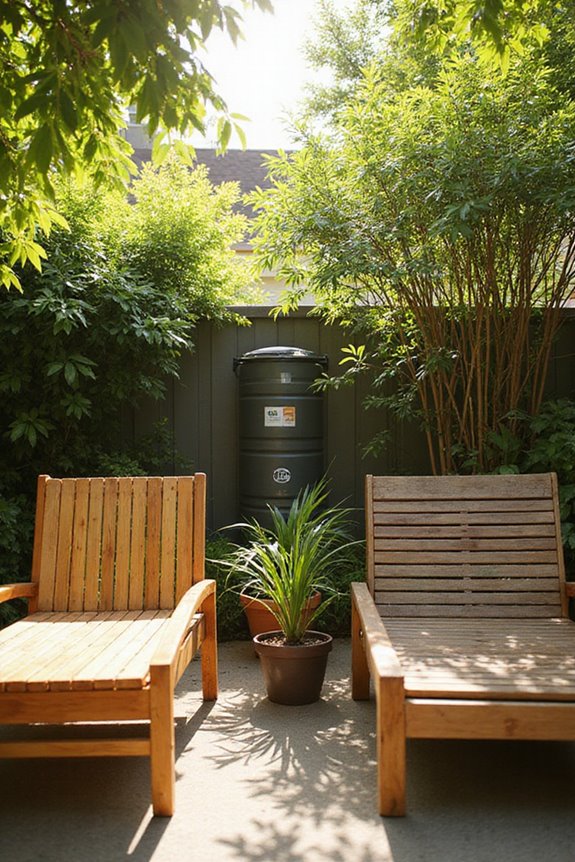
Understanding the environmental impact and sustainability of outdoor furniture is essential for making informed choices. When we compare bamboo and teak, bamboo stands out due to its fast growth and lower carbon footprint. It can replenish in just 3 to 5 years without needing harmful chemicals. In contrast, teak takes up to 30 years to mature, raising concerns about resource sustainability and deforestation.
Bamboo’s cultivation supports biodiversity and improves soil quality. Conversely, teak logging can lead to habitat loss if not sustainably managed. Both materials are biodegradable, but bamboo decomposes faster, returning nutrients to the ecosystem more quickly. By choosing bamboo, we contribute to a healthier planet while enjoying beautiful outdoor furniture. Additionally, bamboo’s rapid growth allows for sustainable harvesting without the need for replanting, further enhancing its eco-friendly profile.
Aesthetic Characteristics
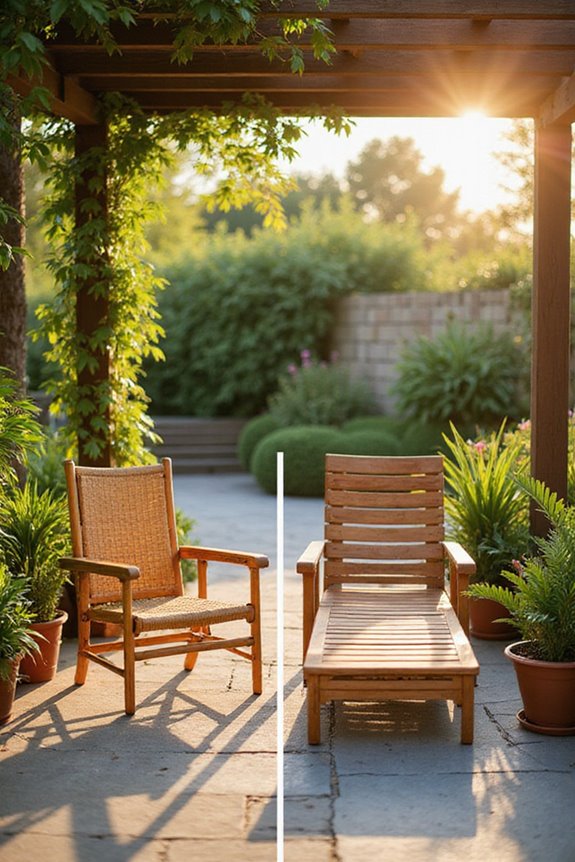
Aesthetic characteristics play an essential role in choosing outdoor furniture, as they considerably impact the overall look of our spaces. Teak, with its warm golden-brown color, adds a timeless elegance that deepens over time. This rich hue creates stunning color contrast against lighter elements in our outdoor areas. In contrast, bamboo offers a light, clean appearance that enhances modern minimalist designs, promoting design cohesion. Both materials feature unique textures and grain patterns. Teak’s fine, consistent grain provides sophistication, while bamboo’s smooth surface complements a fresh, airy feel. Additionally, bamboo furniture’s unique grain patterns add elegance and warmth to outdoor spaces, making it a stylish choice. Whether we prefer the luxurious appeal of teak or the contemporary vibe of bamboo, each choice can enhance our outdoor settings beautifully.
Maintenance and Longevity

Maintaining outdoor furniture is essential for its longevity and appearance. When we choose bamboo, we must be aware that it requires frequent maintenance. This includes applying sealant several times a year and following specific cleaning protocols to prevent mold and mildew. On the other hand, teak demands minimal upkeep. We can clean and oil it every 3 to 12 months, which keeps it looking great without much effort. Teak’s natural oils protect it from moisture and pests, enhancing its lifespan to several decades. In contrast, bamboo’s durability is lower, often needing replacement sooner if not meticulously cared for. Understanding these maintenance frequencies helps us make informed choices for our outdoor spaces. Additionally, bamboo is a rapidly renewable resource, making it an eco-friendly option when properly maintained.
Strength and Structural Properties
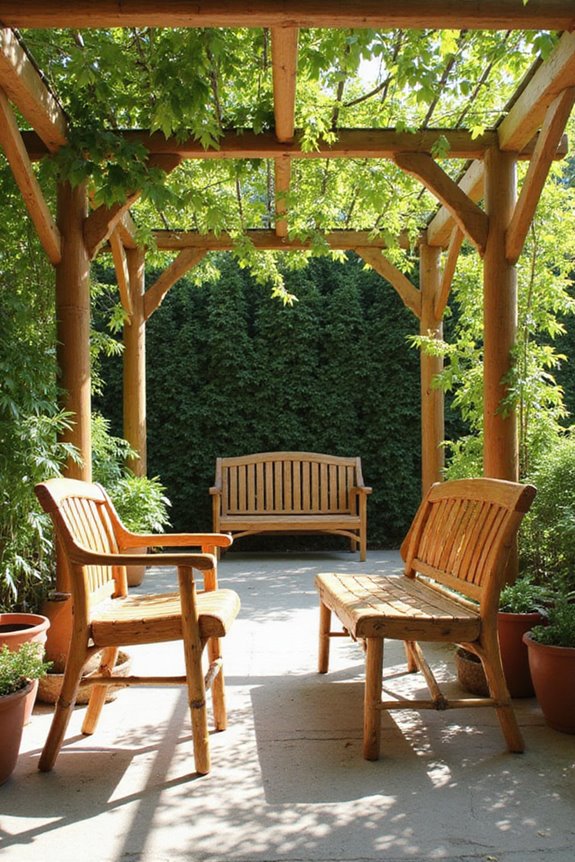
When comparing the strength and structural properties of bamboo and teak, we find distinct advantages and challenges for each material.
- Teak:
- Has a high hardness rating, providing excellent resistance to wear.
- Its dense grain enhances load capacity and stability under stress.
- Teak performs well in compression and doesn’t warp easily.
- Certain varieties boast tensile strength comparable to steel, making it strong in tension.
- Its hollow structure gives it a high strength-to-weight ratio.
- However, bamboo often requires lamination for greater load capacity and may need protective treatments to prevent damage.
Cost and Market Availability
Cost and market availability greatly influence our choice between bamboo and teak outdoor furniture. Bamboo is generally at least 50% less expensive than teak, making it a budget-friendly option. Prices for teak furniture can range from about $2,000 to $30,000 or more, reflecting its premium status.
- Price Stability: Bamboo prices are more stable due to its fast growth and sustainable harvesting. In contrast, teak prices fluctuate based on availability and sustainability certifications.
- Market Trends: Both materials have broad market availability. Bamboo’s eco-friendly appeal is growing, while teak is often marketed as a long-term investment. Additionally, the production of bamboo products typically results in lower energy usage and greenhouse gas emissions compared to teak.
Ultimately, considering cost and market trends can help us make an informed choice that fits our needs and values.
Frequently Asked Questions
How Do Bamboo and Teak Compare in Terms of Comfort?
As we sink into the inviting embrace of bamboo softness or the steadfast warmth of teak durability, we find ourselves wrapped in comfort, each piece offering a unique touch that transforms our outdoor spaces into serene retreats.
Can Bamboo Furniture Be Used Indoors as Well?
Absolutely, we can use bamboo furniture indoors! Its durability guarantees it stands the test of time, while its natural aesthetics bring warmth and charm to our spaces, creating a welcoming and stylish atmosphere for everyone.
What Are the Best Cleaning Methods for Bamboo and Teak?
When it comes to cleaning methods, we’ve got some great tips for bamboo and teak. Regular maintenance advice includes using mild soap and soft cloths; it really helps keep our furniture looking its best together!
Are There Any Health Concerns With Bamboo Furniture?
When considering bamboo furniture, we should be aware of potential toxicity concerns from chemical treatments. Opting for sustainably sourced bamboo can help us enjoy the benefits while minimizing health risks. Let’s make informed choices together!
How Do Bamboo and Teak Handle UV Exposure?
When we think about UV resistance, we notice bamboo fades quicker than teak. In our longevity comparison, teak shines with its natural oils, lasting decades while bamboo requires constant upkeep to combat UV exposure.

